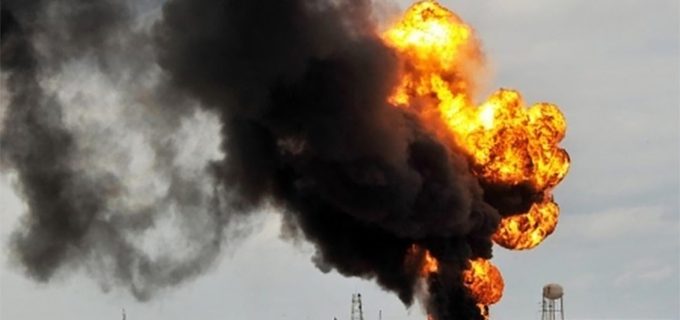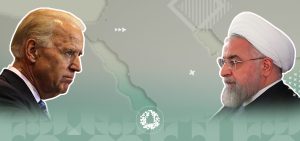The Iranian sphere has been experiencing a new kind of war. Since June 25, Iran has witnessed successive bombings of a number of factories and military institutions, causing significant damage, the results of which are still unknown to the public in light of the secrecy of official state media.
Among the most significant of these bombings was the bombing of the Natanz facility, which Iran blamed on unnamed entities. This incident, as well as other incidents, occurred outside usual diplomatic contexts, and at a time when political escalations have been increasing between Iran, and the US and Israel, with the primary reason being Iran’s nuclear program.
These incidents also took place as Iran experiences difficult economic situations on the ground, as well as a volatile regional situation, which raises a number of questions about the nature of these incidents, whether they are the beginning of cyber wars with Iran, who is behind it and for what purpose?
A series of recent bombings in Iran
A number of bombings have hit some medical and military facilities in Iran since the end of June and the beginning of July. These bombings have taken place simultaneously and in light of tensions in the relationship between Iran and the US. The most important of these bombings are:
1. An explosion near the Parchin military base
On June 26, an explosion occurred near the Parchin military base in eastern Tehran, where weapons are developed. This location is amongst the points of contention between Iran and the P5+1 countries. Whilst the International Atomic Energy Agency (IAEA) had insisted on inspecting the site, Iran had refused. Indeed, it is a military facility for making missiles.
According to the Iranian authorities’ account, this explosion was caused by a leak in a gas storage facility outside the base.
2. The explosion of a medical facility
On June 30, an explosion hit a medical facility north of the capital, Tehran, where 19 people were killed and many others wounded. The governor of Tehran, Hamid Reza Goderzi, said: “The cause of the explosion was a gas leak.”
3. The explosion of the Natanz nuclear facility
The Natanz nuclear facility is located in the Natanz region of Isfahan governorate. It was built in the Zagros mountains by which it was protected from three sides, and by soil mountains from the east. Iran had tried to hide the facility and not disclose it to the IAEA, despite the leaks recognised by the international community since the 1990s regarding it. It was the information from these leaks that the US used to impose international sanctions on Iran.
In their negotiations with Iran in 2003, Britain, France and Germany demanded a complete cessation of the work of these facilities, and they were closed with red wax under the supervision of the IAEA in 2004. Thereafter, former President Muhammad Khatami breached this agreement and resumed work therein during the end of his term because of, what he claimed as, European countries disavowing their commitments to Iran.
Because of this breach, Iran moved the facility underground at a depth of 40 meters, under a cement roof and an arsenal of gravel and sand to prevent it from being targeted. Indeed, in 2010, the US tried to target the facility electronically by planting the Stuxnet virus through electronic parts that Iran bought from Germany to manufacture centrifuges. This virus increases the speed of the devices on which they are used until they self-destruct. However, Iran discovered the plot after the centrifuges broke down and it worked to avoid the matter.
This facility is pivotal in the Uranium Enrichment Program, and the damaged centrifuges are considered to be of the ninth generation, which have the ability to enrich uranium by 50% compared to the first generations. Through this, Iran would be able to compensate for what it lost due to the nuclear agreement.
On Thursday, July 4, an explosion occurred inside this facility, which caused great damage. The head of the National Security and Foreign Policy Committee in the Iranian Parliament, Mojtaba Dhul-Nur, considered the incident a possible cyber-attack for reasons which were not divulged for security reasons, according to his statements.
4. The explosion of the oxygen plant, south of Tehran
This explosion occurred on Tuesday, July 7 in an oxygen plant in Baqir Shahr, south of Tehran. The explosion killed two people and injured others, according to the official IRNA agency. Iranian authorities attributed this explosion, and that of a nearby factory, to human error and workers’ negligence in dealing with oxygen tanks.
The mode and motives of the explosions
Given the extreme secrecy regarding the Natanz facility, and Iran’s inability to accuse a specific party, in addition to the failure of any entity admitting to being behind these incidents, we are left facing three assumptions. If we exclude the opinion that it was an air-strike with a drone, due to air defences and the high fortifications of the facility, then the most plausible explanation is that that it was a cyber-attack, followed by the possibility of it being an improvised explosive device (IED).
1. Cyber-attacks (electronic warfare)
Cyber warfare is described as the least costly and the most destructive form of warfare. It is also the least bloody and is one of the tools affecting political and economic processes between countries today. Indeed, many forms of global conflict have moved into the digital space.
There is a clear opposition between Iran and the US in many files, and this has direct repercussions on events in the region. Perhaps these confrontations have been taking a different direction since last May, relating to the cyber-attacks between Iran and Israel. A report by US Fox News indicated that Iran launched a cyber-attack against the Israeli water infrastructure. Meanwhile, Israeli media outlets reported an Israeli cyber-attack that disrupted computers at the Iranian port of Shahid Rajai, and these almost certain events make the hypothesis of cyber-attacks being involved a very strong likelihood with regards to the attack on the Natanz facility.
2. Internal security operations
The second possibility refers to the possibility of a security operation using high-explosive devices. The entities implementing such an operation may well use cyber capabilities of other countries to bypass the monitoring logistics in the facility. A group calling itself the Homeland Cheetahs has adopted this process, and it consists – according to its statement – of defectors from the army and security forces. This group has never announced itself before however, which raises questions about the timing of its alleged formation, and whether it was the actual entity that carried out the bombing or whether other entities were behind the operation and their statement came to merely cause confusion.
The New York Times referred in one of its reports to the statements of an intelligence official in the Middle East, in which he asserts that the incident was the result of a sabotage operation, and that an explosive device was detonated inside the facility, in a hall near the centrifuges that have not yet been activated. This possibility remains improbable.
Indeed, the assumption of a cyber-attack remains to be most feasible, and in the event that the detonation was with IEDs, this would require supporting cyber capabilities. In both possibilities, we are facing a major event in which cyber capabilities seem to have a role.
Internal and external reflections on the explosions
What is happening today inside Iran is not a coincidence. Rather, it is a development of many events that preceded it, related to the escalating nuclear conflict and Iran’s expansion in the region. These predicate that Iran is a candidate for more aggressive conflicts, which will have direct repercussions within Iran primarily, and on the Arab region as a whole, as well as on Iran’s foreign relations.
1. Internal reflections
These bombings have direct repercussions within Iran because they came in light of a fragile economic situation, successive US sanctions, the consequences of the Corona pandemic, and the increase in the expected rate of contraction, where the IMF report indicates that the rate of contraction will reach 6% this year in the country as citizens’ purchasing ability decreased. The latter is due to the high rate of inflation, to more than 30%, and the convergence of the margin between the average per capita income and the poverty line – between six million tomans per capita income, and five million tomans of the poverty line.
Iran’s disarray in dealing with the nuclear file will intensify after these recent events and their repercussions. There are two sides: the first sees the necessity of calm and proceeding with dialogue with Washington, which is what President Rouhani and his foreign minister are adopting; while the premiership sees the continuity of escalation and collision, which is what the Supreme Leader and the Revolutionary Guards adopt. Perhaps the announcement of Zarif’s resignation in early 2019, which was later retracted, was based on this sharp internal division, and perhaps recent events will be more confusing for Iran’s politics.
Iranian officials often emphasise internal cohesion in the face of any external targeting, and indeed, this is what occurred in many events, most notably the killing of Soleimani and the recent bombings. Perhaps this will be directly reflected in the targeting of opposition supporters at home, and all demands of reform, particularly if internal coordination is proven regarding the explosions.
2. Its implications for the Arab region
The US is trying to combine Arab efforts with Israel in facing regional challenges in the Middle East. This is why the Warsaw Conference in early 2019 aimed to carry out this joint coordination in the face of the so-called Iranian threat, and through it, the US exercised pressure to establish a regional alliance, which has not happened until now.
Furthermore, at the end of 2019, following a statement submitted by France, Germany and the UK to the UN Secretary-General regarding Iran’s development of missiles capable of carrying nuclear warheads, Israeli Foreign Minister Israel Katz said: “The next step must be an effective military threat of a Western-Arab coalition led by the US to deter Iranian aggression.”
Iran believes that there is coordination between the US and its allies in the region to target it, and this reflects recent events in Iran in the region, through its armed wings, such as the Houthis in Yemen and the Popular Mobilisation Forces in Iraq; and perhaps what happened in the targeting of the US embassy in Iraq on July 5 came as a result of Iran exploiting the Iraqi arena to implement its own accounts. Indeed, prior to that targeting, armed factions loyal to Iran, such as the Iraqi Hezbollah, had begun issuing threatening statements to US forces in Iraq.
The Iraq file is perhaps one of the most complex files governing US-Iranian relations after the nuclear program, and Iran considers the steps of the new Iraqi prime minister, Mustafa al-Kazimi, more worrying, especially after Abd al-Wahhab al-Saadi was reinstated as the new head of the Counter-Terrorism Service after he was sacked in September 2019, a move that Iran and its loyal factions in Iraq fear.
3. External reflections
These incidents have external repercussions, especially those pertaining to Iranian relations with European countries and the US, as these events come in light of US’s fear of the expansion of the Chinese-Russian-Iranian axis. Indeed, this increases Western diplomatic escalations, especially after Germany classified Hezbollah as a terrorist organisation. Recent events are moving the external conflict to a completely different path, and perhaps the most prominent thing to explain these are:
a) The ambiguity of the implementing entity
The ambiguity of the executing entity puts us in front of a fundamental question related to the possible number of countries who played a role in the operations or have knowledge of it. If we take the context of the bombing into account, as well as the previous accusations of Iran of being behind the bombings that occurred in Israel, this may make it more likely that Israel is responsible.
For any of the bombings, the issue of internal-external coordination to facilitate the operation prevails. In general, Israel does not usually announce its support for such operations, and Iran avoids accusing Israel for fear of affecting the morale of its supporters. However, Israel is a pioneer of resistance, according to their own description. It often conceals real information while leaking other information, and media leaks sometimes issue true stories, as happened with the Ukrainian plane on January 8 of this year.
b) The type of attack
If the cyber-attack narrative is indeed correct, then the US-Iran conflict may take a different turn, and Israel may adopt what is required to confront Iran with coordination with some Arab countries whilst the US is preoccupied with confronting the Russian and Chinese roles. Thus, the conflict may take on a new character with an apparent shift dependent on electronic gadgets, which could lead to a drain on Iran.
Ghulam Reza Jalali, head of Iran’s Civil Defence stated that Iran will take reciprocal measures against any country that causes electronic attacks on nuclear facilities. He therefore is not ruling out that Iran would undertake similar responses targeting Israel or US interests in the region. In this context, the Director of the European Centre for Energy and Geopolitical Analysis, Yana Popkostova, said: “Iran has developed, notably under the watch of late Soleimani, sophisticated cyber-capabilities over the past couple of years to compensate for the weak conventional military force of the country and prepare Iran for indirect reprisals.”
Because Iran’s electronic capabilities are weak compared to those of the US, the former may resort to coordination with Russia as a pioneer in this field along with China, and here, Iran may form a state of balance of power. But it remains unlikely, at the present time, that Iran would engage in major attacks targeting the US and Israel.
Conclusion
Following the US withdrawal from the nuclear agreement, Iran found itself free from many of the restrictions imposed by the agreement. This is why it moved to a second stage after enriching uranium to storing it. This poses a threat to countries opposed to the Iranian nuclear program and does not rule out the escalation of confrontations in the next phase to thwart any nuclear progress. In the event that the US and Iran do not reach a settlement regarding this file, it is assumed that the issue will become more complex, especially after the introduction of cyber warfare to the front line. The New York Times revealed the US-Israeli plan to confront Iran’s nuclear and missile facilities and assassinate officers in the Revolutionary Guard, and it seems that the conflict will escalate simultaneously with the upcoming US presidential election campaign in November of this year.







